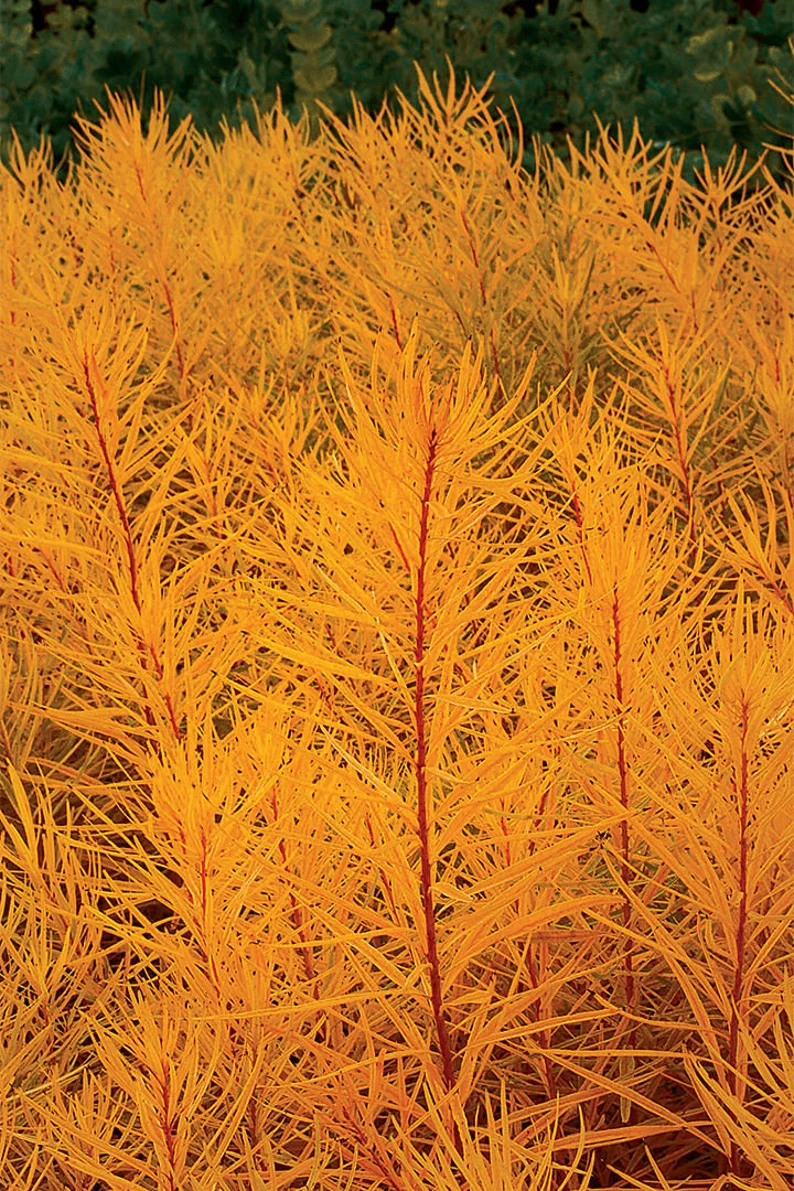
Butterscotch Threadleaf
Butterscotch threadleaf (Santolina virens ‘Lemon Fizz’) is an impressive looking plant with its striking foliage and bright yellow flowers. It is a low-growing perennial that is native to South America. The plant is considered an evergreen, meaning it will stay green year-round.
This plant is a beautiful addition to any garden or landscape and will add a unique texture and color. It looks great when planted in masses or grouped with other plants. The foliage is an attractive olive green with a contrasting yellow midrib. During summer and early fall, it produces bright yellow flowers that will attract hummingbirds and butterflies.
Also super easy to care for and requires very little maintenance. It prefers moist, well-draining soil and thrives in part to full sun. It is drought tolerant and can handle temperatures as low as 20°F. It can also be grown in containers.
Butterscotch threadleaf is a great choice for those looking to add texture and color to their outdoor space. It is a low-maintenance plant that is sure to add beauty and interest to your garden. With its attractive foliage and bright yellow flowers, this plant is sure to be a hit in any garden.
Care Guide
Here’s a guide to Butterscotch Threadleaf, a popular ornamental plant known for its fine, thread-like foliage and vibrant yellow color:
- Planting:
- Choose a well-draining location with full sun exposure for your Butterscotch Threadleaf plant.
- Prepare the soil by removing any weeds or grass and loosening it to ensure good drainage.
- Dig a hole that is slightly larger than the root ball of the plant.
- Place the plant in the hole, making sure the top of the root ball is level with or slightly above the soil surface.
- Backfill the hole with soil, gently firming it around the plant to remove any air pockets.
- Water the plant thoroughly after planting to settle the soil.
- Watering and Maintenance:
- Butterscotch Threadleaf is drought-tolerant once established and prefers dry to medium moisture levels.
- Water the plant deeply but infrequently, allowing the soil to dry out between waterings.
- Avoid overwatering, as it can lead to root rot and other issues.
- Regularly monitor the soil moisture and adjust your watering accordingly, especially during hot and dry periods.
- Mulch around the plant to conserve moisture and suppress weed growth.
- Pruning:
- Butterscotch Threadleaf has a compact, mounding growth habit and generally requires minimal pruning.
- However, you can lightly prune the plant in late spring or early summer to shape it and promote a denser growth.
- Remove any dead, damaged, or overcrowded branches to maintain the plant’s health and appearance.
- Avoid heavy pruning, as it may affect the plant’s natural form and reduce flowering.
- Fertilization:
- Butterscotch Threadleaf is a relatively low-maintenance plant that doesn’t require heavy fertilization.
- Prioritize good soil preparation with organic matter before planting.
- If desired, you can apply a slow-release granular fertilizer in spring to provide a light nutrient boost.
- Follow the manufacturer’s instructions regarding application rates and methods.
- Pests and Diseases:
- Butterscotch Threadleaf is generally resistant to pests and diseases.
- However, keep an eye out for common garden pests like aphids, spider mites, or mealybugs.
- If you notice any pest infestations, you can use organic insecticidal soaps or horticultural oils to control them.
- Proper spacing, good air circulation, and avoiding overwatering can help prevent disease issues such as root rot or powdery mildew.
- Winter Care:
- Butterscotch Threadleaf is hardy in USDA zones 6-9 and generally withstands winter conditions well.
- In colder regions, you can protect the plant by applying a layer of mulch around the base to insulate the roots.
- Avoid excessive moisture during winter, as this can lead to root rot in the dormant season.
By following these guidelines, you can enjoy the beautiful and vibrant Butterscotch Threadleaf plant in your garden or landscape. Remember to consult local gardening resources or experts for specific recommendations based on your region’s climate and conditions.


